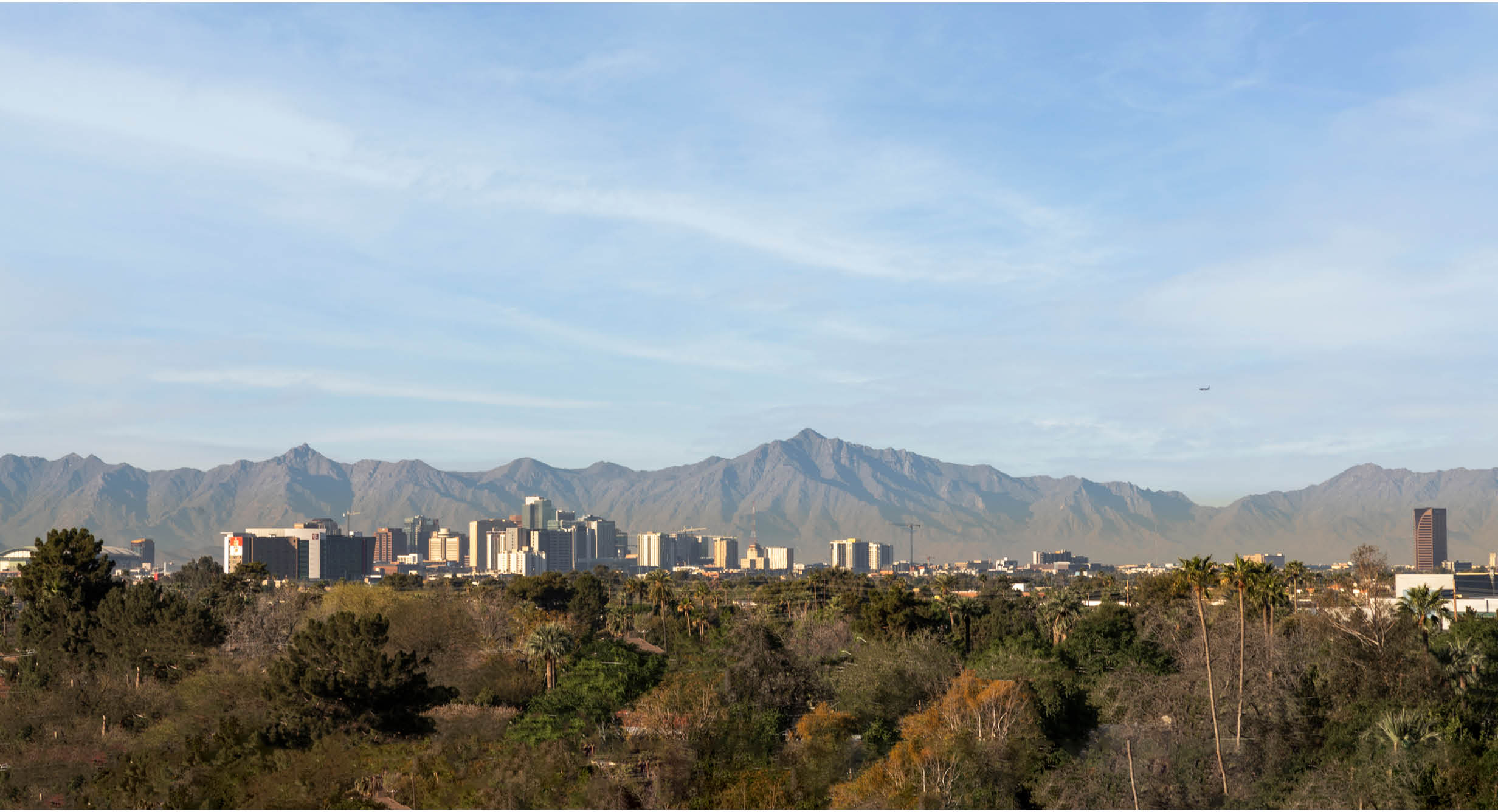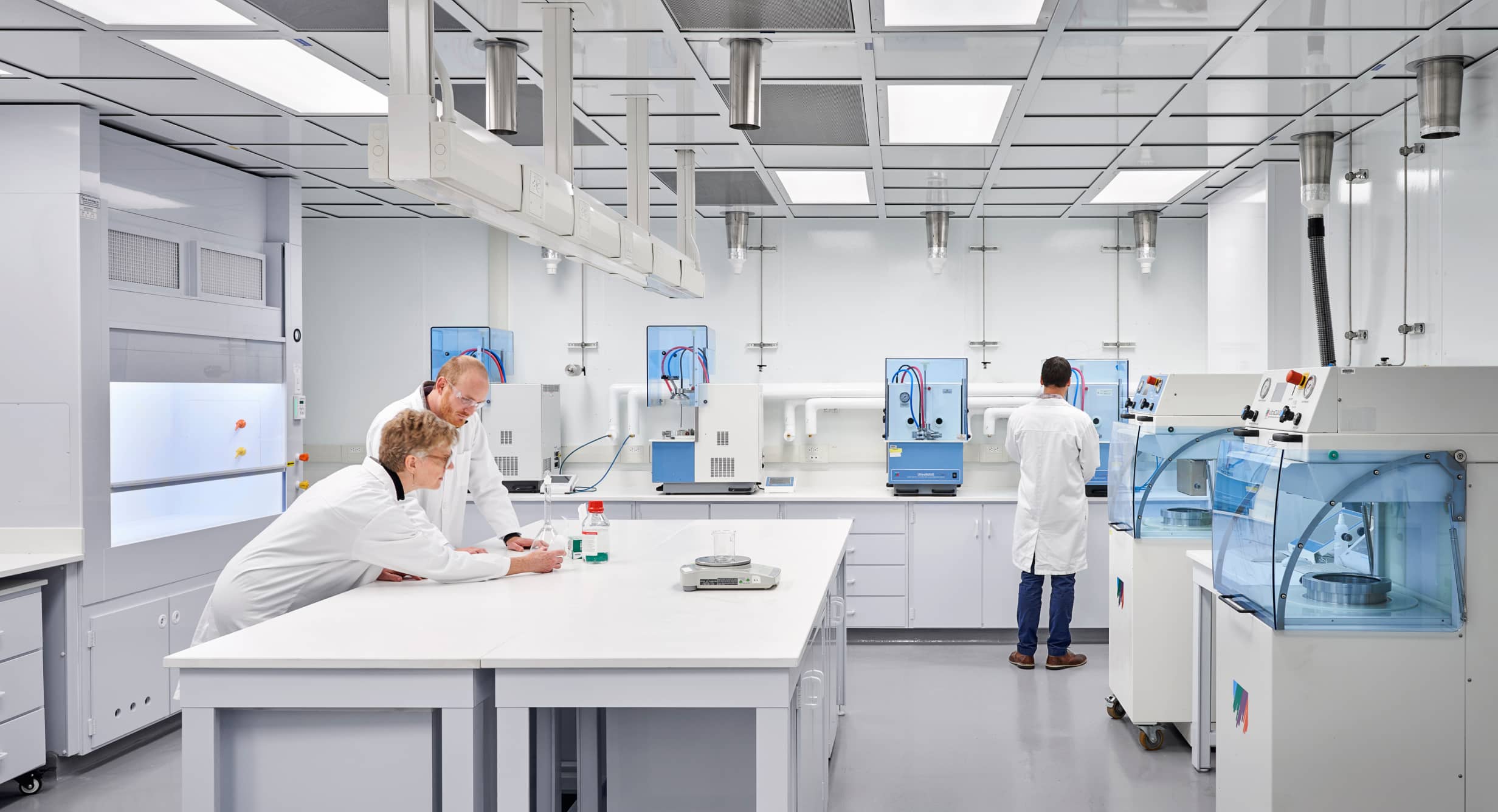
Increased Demand for Building Design in the U.S. Southwest Fueled by Growing Metros
The Southwest region of the United States is home to several of the fastest-growing metro areas in the country. Small- and mid-sized cities, as well as large metropolises such as Salt Lake City, Las Vegas and Phoenix — which just surpassed Philadelphia as the nation’s fifth largest city — are all growing at a phenomenal pace. And all that growth is translating into an increased demand for building design and construction.
“The growing population and economy in this region is driving demand for new types of environments in a variety of sectors including residential, commercial, science and technology and health,” said Scott Hunter, HKS Regional Director for Americas West. “More people means more opportunities to design innovative places that support their daily lives.”
Why Companies Are Putting Down Roots in the Southwest
People are moving to the Southwest to take advantage of lifestyle benefits such as proximity to natural resources and relatively lower costs of living compared to large cities in California and New York. And large corporations are following the people to reap the benefits of Southwest states’ cheaper land and smaller amount of red tape.
Emir Tursic and Mike Vela, office directors of HKS Salt Lake City, said conditions are favorable for companies coming from out-of-state to build new developments or move into existing properties in Utah.
“There is a different approach here. The governments here are a lot more collaborative and less regulatory,” said Tursic.
Arizona also has a business-friendly environment, according to Sidney Smith, office director of HKS Phoenix. He noted that the state’s population influx is driving growth across construction market sectors.
Though most major U.S.-based corporations maintain headquarters in coastal cities, many — including financial giants like Goldman Sachs and Wells Fargo — now have large outposts in Salt Lake City and Phoenix.
But no sector is capitalizing on the opportunities of the Southwest quite as much as the tech industry.
About 25 miles south of Salt Lake City, an area dubbed “Silicon Slopes” has become a destination for tech start-ups and long-established players including eBay and Adobe Systems. Similar small and mid-size metro areas throughout Utah, Arizona and Nevada have attracted technology companies and as a result, speculative commercial office buildings and new or renovation-ready properties for mission critical facilities have both surged.
“Tech companies are looking at creating massive data centers where they can get cheap, abundant power, where less expensive land is readily available, and where the regulatory climate is much easier to get things approved. It’s a rapidly growing market for us,” said Hunter, noting that HKS offices in the region are working hard to design secure mission critical facilities like Aligned Data Centers in West Jordan, Utah.
A Growing Emphasis on Science and Technology
Beyond access to affordable and abundant real estate, the growing appetite for tech facilities in the Southwest is aided by the region’s number of world-class research universities.
“Having a large pool of educated graduates is part of why the tech industry is growing so much,” Vela said, referencing large schools such as University of Utah in Salt Lake City and Brigham Young University in Provo, Utah.
In Arizona, tech firms are taking advantage of the talent coming out of institutions there, including Arizona State and the University of Arizona.
“A lot of companies, especially ones from California, are thinking, ‘Why should we hire people from out-of-state and bring them here where the cost of living is higher when we could just meet them where they are and have them work in the state where they are graduating’,” Smith said.
Arizona’s major universities and large health care systems are strategically aligning with private industry to create science and innovation corridors, Smith said. HKS is leveraging our nearly 30-year history working with major health systems and allied industries in the Southwest and Mountain states to build relationships and influence the future of sci-tech design and development.
“These clients tend to rely on one another for research and evolution,” Smith said. “Science and technology rely on health care and vice versa. We can be the conduit between those two to help them learn more about each other’s practice and how they work.”
Smith cited HKS-designed 850 PBC in Phoenix as a key example of how integration among biomedical, technology, and research institutions can support relationship and community building.
The wave of science and tech developments isn’t limited to suburbs or university-adjacent locations. Tursic said that in Salt Lake City, there is a “very deliberate effort” at the local government level to nurture the biotech industry. City officials, he noted, are implementing a zoning change that would allow life science labs to be built downtown, which will aid the development of integrated innovation districts in the urban core.
New Lifestyles Drive Mixed-Use, Residential, Commercial and Entertainment Design
As more and more companies have flocked to Phoenix and Salt Lake City, the number of young professionals, young families, and people who are used to living in bigger, denser cities has grown. Phoenix, in particular, has a diverse residential building stock drawing people to its downtown area including condos, high rises, and historic properties.
In addition to wanting places to live downtown, younger demographics are also increasing demand for mixed-use amenities and places where they can socialize, eat, and enjoy entertainment all within a short walk of one another.
“There’s real synergy. What we’ve called ‘live, work, and play’ for a long time — we’re seeing really come to fruition in a market like ours now,” said Tursic.
HKS has long designed hospitality and sports destinations in the region. Utah mountain resorts such as Montage Deer Valley and baseball spring training facilities in Arizona including Salt River Fields at Talking Stick are examples of how HKS designers have been able to provide world-class amenities for short-term visitors.
Now, the firm is taking that experience and expertise into city centers to serve the growing metro populations who live there 365 days a year. Tursic said HKS’ recent amenity-rich projects in Salt Lake City — ranging from luxury residential high-rise Astra Tower to large mixed-use hotel developments and smaller social clubs like the newly-opened Edison House — speak to Salt Lake City’s positive transformation.
Vela credits the 2002 Salt Lake City Olympics as a major turning point in recent history. He said it enhanced the public’s perception of the city and started a significant invigoration of downtown.
“Downtown is alive. There are places to eat and bars, and the theaters that we have been able to design,” Vela said, noting that the HKS-designed George S. and Dolores Doré Eccles Theater and its 2,500-seat performance hall gave the city the ability to host major entertainment acts and attract visitors and locals alike to enjoy events downtown.
Both HKS Phoenix and HKS Salt Lake City are moving later this year to new offices that they designed in the heart of their respective downtowns where employees in those offices can enjoy the benefits of mixed-use developments. Those offices’ leaders are working to expand relationships and build new ones to design more properties that support lifestyles of people residing in Phoenix, Salt Lake City, and beyond.
Maturing Markets
As the Southwest population continues to surge, a backswing in affordability of residential and commercial design and construction is already occurring. Metro areas are attempting to prevent this, in part by supporting integrated design and planning solutions such as transit-oriented development and adaptive re-use of existing buildings.
Seeking to provide the built environment people need to thrive, even amid constraints of an ever-changing development market, designers see exciting opportunities for the future of architecture in Southwest states.
HKS leaders said that the region’s development approaches are maturing, meaning design projects are increasing in sophistication. Technology and mission critical, health and life sciences, and residential and commercial mixed-use are all in-demand building types that require a high level of skill and expertise.
“HKS’ legacy of delivering complex projects — from large medical hospitals to high-rise residential towers and major sports facilities — uniquely position the firm to partner with building owners, developers, and cities for the types of projects the Southwest region needs right now,” Hunter said.
The four office directors of HKS Phoenix and Salt Lake City — each of whom is a transplant and chose to call the Southwest home just like many of the millions moving there now — are excited be a part of building the region’s future.
“It’s genuinely a great place to live, work, raise a family and it’s growing so much,” Vela said of Salt Lake City. “It’s gratifying as an architect to have a hand in changing the face of the city for the good. That’s why we do what we do.”





